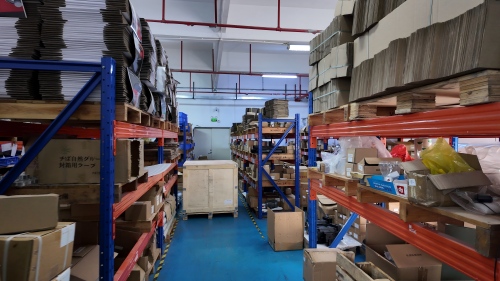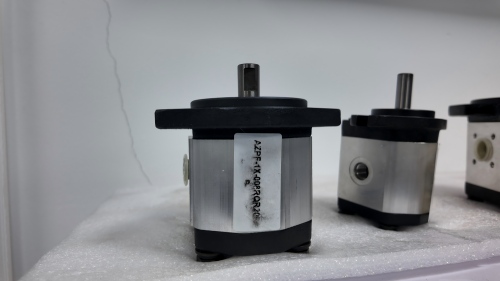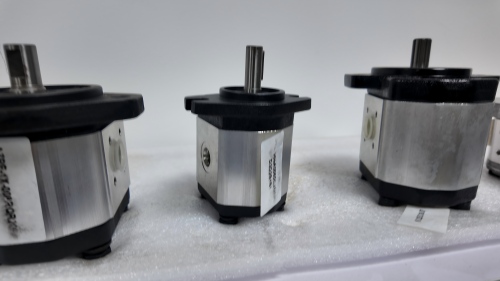Menu
The hydraulic cylinder repair service market reached $2.21 billion in 2023 and is projected to grow to $3.01 billion by 2030 (Source: verifiedmarketreports.com, 2025), yet many equipment managers still default to replacement when cylinders fail. Here’s what most people miss: unplanned downtime costs the world’s 500 largest companies $1.4 trillion annually—11% of their total revenues (Source: Siemens True Cost of Downtime report, 2024). The real question isn’t whether repair saves money, but how much you’re leaving on the table by not exploring it first.
The math is straightforward. Rebuilding a hydraulic cylinder typically costs significantly less than full replacement (Source: yatesind.com, 2022), and when you factor in faster turnaround times and extended equipment lifespan, the savings compound quickly. Yet the decision goes beyond simple price comparison—understanding when repair makes financial sense versus when replacement is warranted can mean the difference between optimizing your maintenance budget and hemorrhaging cash on unnecessary purchases. With the global hydraulic cylinder market valued at $15.7 billion in 2024 and projected to reach $24.7 billion by 2034 (Source: gminsights.com, 2025), the equipment you maintain represents significant capital investment worth protecting.

Breaking down the actual numbers reveals why repair often wins the cost-benefit analysis. Repair kits typically range from $60 to $100, with labor costs running $120 to $160 per hour (Source: justanswer.com, 2024). For a standard cylinder repair requiring approximately two hours of work, you’re looking at total costs between $300 and $420.
Compare this to replacement costs, which vary dramatically based on cylinder size and specifications. Replacement prices can range from several hundred to several thousand dollars, with larger or specialized cylinders pushing costs even higher. A 3-inch bore cylinder replacement, for instance, might cost $600 or more, while repair services for similar cylinders typically run around $500 (Source: greentractortalk.com, 2024).
But direct replacement cost is just the starting point. When you purchase a new cylinder, you’re also absorbing:
Lead time expenses: Manufacturing and shipping delays for new cylinders extend downtime. Proper repair can be completed quickly, minimizing downtime and keeping operations running. Every additional day of waiting translates directly to lost productivity.
Installation complexity: New cylinders may require modifications to mounting hardware or hydraulic connections, adding labor hours and potential compatibility issues that drive up total project costs.
Disposal costs: Depending on your location and environmental regulations, properly disposing of a failed hydraulic cylinder isn’t free—and it certainly isn’t helping your bottom line.
The hidden cost that tips the scales decisively toward repair is downtime. In the automotive sector, an idle production line in a major plant costs up to $2.3 million per hour (Source: Siemens, 2024). Even in less intensive industries, the financial impact is substantial.
Major manufacturers now experience an average of 25 downtime incidents monthly, with plants losing 27 hours per month to unplanned downtime (Source: Siemens True Cost of Downtime report, 2024). When a cylinder failure occurs, every hour counts. Repair services can often provide same-day or next-day turnaround, while sourcing, shipping, and installing a replacement cylinder might take a week or more.
Consider a mid-sized manufacturing operation where equipment downtime costs $5,000 per hour. A three-day wait for a replacement cylinder ($360,000 in lost productivity) versus a one-day repair turnaround ($120,000) represents a $240,000 differential—making even a $2,000 repair look like an absolute bargain. Two-thirds of companies now report that unscheduled downtime significantly impacts their operations (Source: ABB Value of Reliability report, 2024).
Not every cylinder failure warrants repair, but understanding the sweet spot helps you capture the most savings. Most cylinders can be repaired economically if damage is limited to seals, head glands, pistons, bushings, or removable mounts (Source: aggressivehydraulics.com, 2024). The industrial hydraulic equipment market’s growth to $46.5 billion in 2024 (Source: gminsights.com, 2025) demonstrates the scale of equipment relying on these critical components—and the massive opportunity for cost savings through strategic repair decisions.
Seal failures represent the most straightforward repair scenario. When a cylinder leaks due to worn seals but internal components remain sound, replacement seals restore full functionality at minimal cost (Source: aggressivehydraulics.com, 2024). These repairs often take just hours and require no specialized parts beyond standard seal kits.
Surface damage on piston rods can frequently be addressed through resurfacing or re-chroming. Even bent rods or damaged cylinders can often be repaired economically if detected early, particularly on larger bore cylinders where replacement costs escalate quickly.
Minor internal wear including bearings and bushings falls into the repair-friendly category. These components experience normal wear patterns and can be replaced during a rebuild without affecting the cylinder’s structural integrity.
The repair vs. replace calculation shifts when you encounter barrel damage, extensive corrosion, or structural deformation. If rod assembly or barrel assembly replacement is required, especially on smaller assemblies made in high-volume production environments, replacement often becomes more economical (Source: aggressivehydraulics.com, 2024).
Repaired cylinders often outperform their pre-failure condition. A rebuilt hydraulic cylinder will be more powerful and efficient, consuming less oil and reducing operational costs (Source: yatesind.com, 2022). This efficiency gain matters because hydraulic fluid isn’t cheap—and leaking cylinders waste expensive specialty oil while potentially contaminating work areas.
The more efficient operation of rebuilt parts reduces wear and tear on other components, increasing their service life. This cascading benefit extends beyond the repaired cylinder itself. When one component operates at peak efficiency, it reduces stress on pumps, valves, and hoses throughout the hydraulic system.
Professional repair services also provide diagnostic value that replacement doesn’t. Skilled professionals can track down the root cause of failure and make recommendations to prevent it from happening again (Source: mac-hyd.com, 2024). If contaminated fluid caused premature seal failure, simply installing a new cylinder will result in the same problem recurring—wasting both the replacement cost and creating another downtime event.
Repacking hydraulic cylinders should be a standard part of your preventative maintenance schedule because it helps extend the service life of your cylinder (Source: yatesind.com, 2022). Establishing a proactive repair and maintenance program delivers compounding returns:
Extended replacement intervals: Cylinders maintained properly can operate for decades rather than years, dramatically reducing capital equipment expenses over time.
Predictable budgeting: Scheduled maintenance costs less than emergency repairs. Companies with dedicated predictive maintenance teams have reduced downtime incidents from 42 to 25 monthly, with hours lost dropping from 39 to 27 per month (Source: Siemens, 2024).
Performance consistency: Well-maintained cylinders deliver consistent force and speed, improving product quality and reducing scrap rates in manufacturing applications.
Wajax’s Hydraulic Cylinder Exchange Program offers substantial savings of up to 25% compared to purchasing new cylinders (Source: wajax.com, 2022), demonstrating that professional repair services can deliver predictable, significant cost reductions. This program operates with over 30 years of experience and provides cylinders repaired to OEM specifications with faster turnaround than purchasing new.
The agricultural sector provides particularly compelling examples. Farmers and equipment operators working with John Deere tractors or New Holland harvesters face repair decisions regularly. Understanding when to repair, rebuild, or replace can save both time and money (Source: cylindersinc.com, 2024), with repair typically being the first line of defense for common issues like leaking seals or minor rod damage.
In industrial settings, the savings scale upward with equipment size. A large mining operation might spend $10,000 replacing a specialized cylinder but could accomplish the same restoration through repair for $3,000-$4,000—a 60-70% cost reduction that adds up quickly when managing fleets of dozens or hundreds of hydraulic-powered machines.

**Choosing replacement as a default strategy comes with expenses that don’t appear on initial quotes. Rebuilding a hydraulic cylinder extends its lifespan by several years and provides environmental benefits by reducing waste and conserving resources (Source: saivstool.com, 2024).
Environmental compliance: Disposing of hydraulic cylinders requires proper handling of residual oil and metal components. Some jurisdictions impose disposal fees or require certified recycling, adding $50-$200 per cylinder to your true replacement cost.
Inventory carrying costs: Maintaining an inventory of replacement cylinders ties up capital and warehouse space. Repair-focused strategies reduce the need for extensive spare parts inventories, freeing up cash for more productive uses.
Training and documentation: New cylinder models may require updated training for maintenance staff and operators. Repair maintains consistency with existing equipment, avoiding these soft costs.
Warranty complications: Replacing a cylinder mid-lifecycle might void warranties on related hydraulic components or affect manufacturer support. Proper repair through certified shops typically maintains warranty coverage and support relationships.
Start by assessing three critical factors: cylinder age and condition, extent of damage, and operational urgency.
For cylinders less than five years old with isolated failures, repair almost always makes financial sense. The structural components remain sound, and addressing the specific failed component restores full functionality at a fraction of replacement cost.
For cylinders showing repeated failures in different areas, deeper investigation is warranted. If failure was not due to routine wear and tear, the cause needs to be tracked down before committing to either repair or replacement. Sometimes system contamination or misalignment issues cause cascading failures—addressing only the symptom guarantees you’ll face the same problem again.
For older cylinders or those with catastrophic damage, replacement might be the pragmatic choice. Extensive damage or structural issues might necessitate complete replacement (Source: cylindersinc.com, 2024), particularly when repair costs approach 70-80% of replacement costs or when discontinued models make sourcing parts difficult.
Choosing the right hydraulic cylinder repair provider is essential, whether you’re dealing with bent rods, damaged cylinders, or complete replacement. Look for:
Documented experience with your specific cylinder types and applications. A shop that primarily handles agricultural equipment may not have the expertise for industrial press cylinders.
Transparent pricing with detailed estimates breaking down parts and labor. Avoid shops that provide only ballpark figures—you need specifics to make informed financial decisions.
Quality guarantees backing the repair work. Reputable shops stand behind their work with warranties that protect your investment.
Fast turnaround options for critical equipment. The ability to expedite repairs when necessary provides flexibility that standard replacement timelines can’t match.
Maximizing repair savings requires a strategic approach beyond individual failure responses. Rebuilding can be done quickly, minimizing downtime (Source: millerhydraulic.com, 2025), but implementing predictive maintenance takes optimization further.
Condition monitoring identifies issues before complete failure occurs. Regular inspections catch early warning signs—minor leaks, unusual noises, or performance degradation—when repairs remain simple and inexpensive.
Fluid analysis programs detect contamination before it damages seals and internal components. The cost of periodic oil testing (typically $30-$50 per sample) is negligible compared to premature cylinder failure costs.
Documentation systems track repair history, failure patterns, and costs across your equipment fleet. This data reveals which cylinders are cost-effective repair candidates versus chronic problems requiring replacement.
Vendor relationships with quality repair shops often yield preferred pricing, faster service, and priority scheduling during busy periods—all factors that amplify cost savings over time.
The maintenance approach also matters. With a regular maintenance and upkeep schedule, you avoid encountering catastrophic failure at the worst possible time, such as during peak production periods when downtime costs multiply.
The timeframe for a rebuild can vary from a few hours to several days, depending on the complexity of the job and the availability of parts (Source: cylindersinc.com, 2024). Simple seal replacements often complete within 24 hours, while more extensive rebuilds requiring machining or special parts might take 3-5 days. Emergency expedite services can sometimes compress these timelines further.
A properly repaired cylinder can match or exceed the remaining lifespan of a new cylinder. Many repairs restore cylinders to like-new condition, providing years of reliable service. The key factors are proper diagnosis of the failure cause, quality replacement parts, and correct reassembly procedures.
Most hydraulic cylinders are repairable, often at a fraction of the cost of a new one (Source: cylindersinc.com, 2024). However, some specialty or obsolete designs present challenges. NFPA-style cylinders with tie rods generally repair more easily than welded cylinders with extensive barrel damage. Consultation with a repair specialist helps determine feasibility for specific models.
This decision depends on several factors including the cost of a new cylinder versus rebuilding, the age of the existing cylinder, and whether the existing cylinder is a special design (Source: cylindersinc.com, 2024). Generally, if repair costs exceed 70% of replacement costs and the cylinder is older than its expected lifespan, replacement becomes more economical.
Seal wear, fluid contamination, and improper lubrication account for the majority of cylinder failures (Source: cylindersinc.com, 2024). Seals and bearings endure constant friction and pressure, making them susceptible to wear over time. External factors like corrosive environments, impact damage, and improper alignment also contribute. Addressing these root causes during repair prevents recurrence.

Quality repairs often improve performance. A rebuilt hydraulic cylinder will be more powerful and efficient, consuming less oil than the failed cylinder it replaces. Machining worn surfaces, replacing seals with improved materials, and proper tolerance adjustments can restore or enhance original specifications.
The evidence overwhelmingly supports repair as the cost-effective choice for most hydraulic cylinder failures. With the hydraulic cylinder repair service market growing at 4.5% annually (Source: verifiedmarketreports.com, 2025) and manufacturers reducing unplanned downtime through better maintenance strategies, smart operators are already capitalizing on repair economics.
Your action plan should prioritize three steps:
First, establish relationships with qualified repair providers before failures occur. Research local shops, check references, and understand their capabilities and turnaround times. Having these connections in place eliminates scrambling during emergencies.
Second, implement condition monitoring and preventive maintenance programs. The investment in regular inspections and fluid analysis pays returns many times over through early problem detection and extended equipment life.
Third, track and analyze repair versus replacement costs across your equipment fleet. Data-driven decision making removes guesswork and helps you identify patterns—which cylinder types are cost-effective repair candidates and which models justify proactive replacement.
The question isn’t whether hydraulic cylinder repair can save money—the data proves it does. The real question is whether you’re positioned to capture these savings through strategic maintenance decisions, quality repair partnerships, and proactive equipment management. For most operations, the potential savings run well into five or six figures annually, making this one of the highest-return opportunities in equipment maintenance optimization.